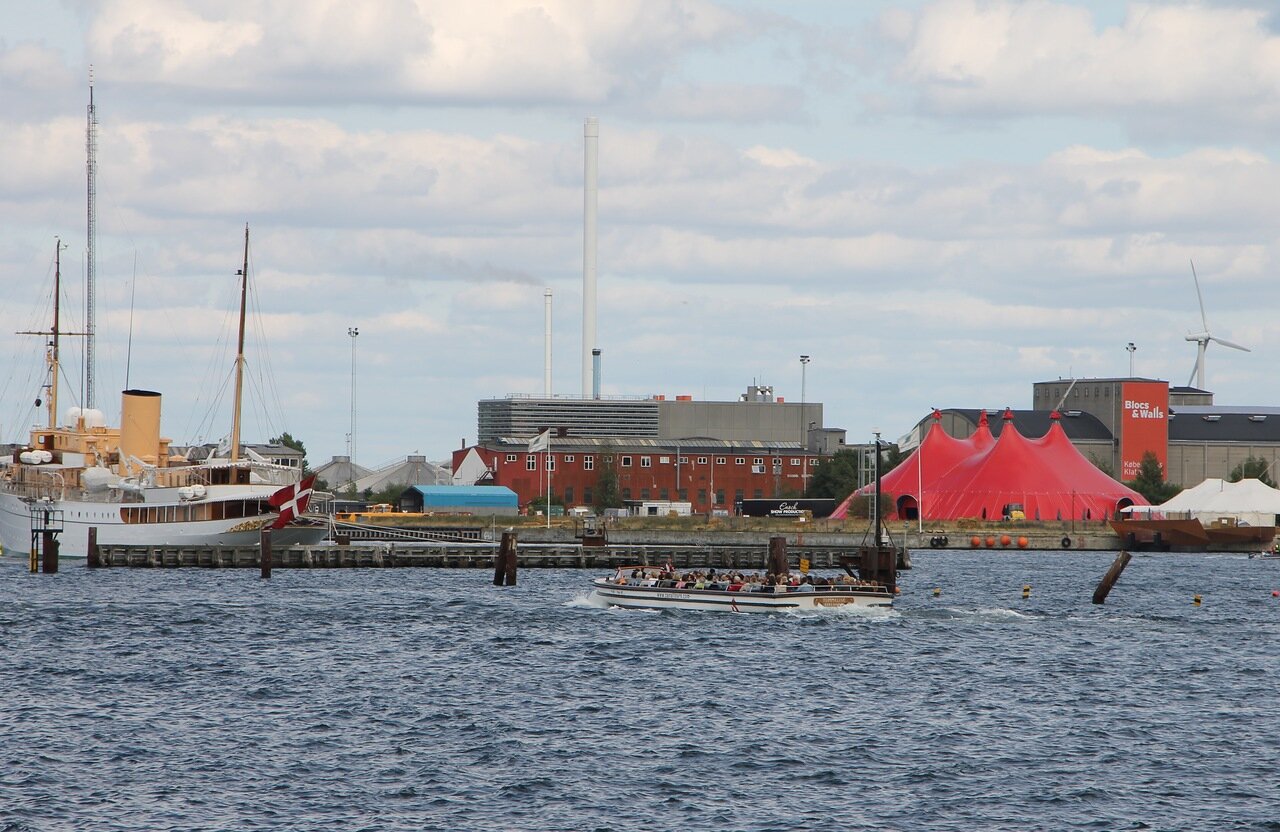Copenhagen. Larsens Plads waterfront promenade and Inderhavn harbor
Park Amaliehaven built on the site of the shipyards belonging to the first half of the 19th century's major shipbuilder Lars Larsen. Therefore, the Western shore of the harbour Interchan received the nickname Larens Plads, meaning "place of the Larsen". In 1844 the shipyard was bought by the Jacob Hill (Jacob Holm), the owner of the largest shipping company of Denmark, and used them as a repair plant for its fleet. In 1870 the plant was closed, and in its place was built the terminal company Thingvalla Line, carrying out regular flights to North American United States. With berths Larsens Plads ships took thousands of Danes and other Scandinavian countries, in search of a better life. The line lasted until 1935. After it was built in the early 20th century South harbour, Interchan lost its importance, and gradually, his wharfs and warehouses fell into disrepair. After the war the city authorities demolished the wooden piers, and in their place built a wide promenade, the main promenade of Copenhagen.

Blue warehouse (Det Blå Pakhus map) - a former port warehouse, built in 1783 by the architect Caspar Frederik Harsdorff. The warehouse was built for the Royal Greenland company, providing supplies of goods to Greenland, but during construction the building was sold to Baltic-Guinean trade company. The warehouse was used for storing tobacco, sugar and chlopaka imported from from distant African countries. The Baltic-Guinea company lasted only five years, after which the warehouse was used as a granary, and wherein the function performed until 1946. After that, the building was abandoned 70 years. From 1978 to 1980 the warehouse was rebuilt into a residential complex project architects Flemming Hertz and Oletuksena. In earlier times, the building had a blue roof and shutters on the Windows, hence the name.

The Following is Yellow warehouse (Det Gule Pakhus). This building was built by architect G. E. Rosenberg in 1739 and belonged to the Greenland company. After the port was moved out of downtown, the building has been abandoned for as long as it is not the fire occurred. After this, in 1968 the warehouse was rebuilt into a housing project Hans Munk Hansen.

Statue of David, a copy of the famous marble sculpture, completed by Michelangelo in 1504 and held at the Academy of fine arts in Florence. The replica was cast from bronze by the famous brewer Carl Jacobsen in 1896 and donated to the city. Originally the statue was installed on the square in front of city Hall, where she stood for only 3 years. During the 20th century, the monument changed your address, finally, in 1993, go find him a place on the waterfront.

At the end of Larsens Plads , on the shore of a small Bay Toldbodens Bådehavn, from the old port was an old cargo boom with manual transmission.

the Inderhavn (inner harbour) - the main water area of the old Copenhagen harbour.

On the opposite Bank of the harbour is naval base Holmen.

Harbour teeming with pleasure vessels.


From moorings in the Northern part of the promenade Larsens Plads the pleasure boats go through the canals of Copenhagen and the naval fortress of Middelgrundsfortet and Trekroner.

Royal yacht Danneborg.

Electric Boat - environmentally friendly ships pleasure fleet of Copenhagen.

Today on the waterfront held an open doors day diving service of the Royal Navy. Naturally, I could not get past this event.

